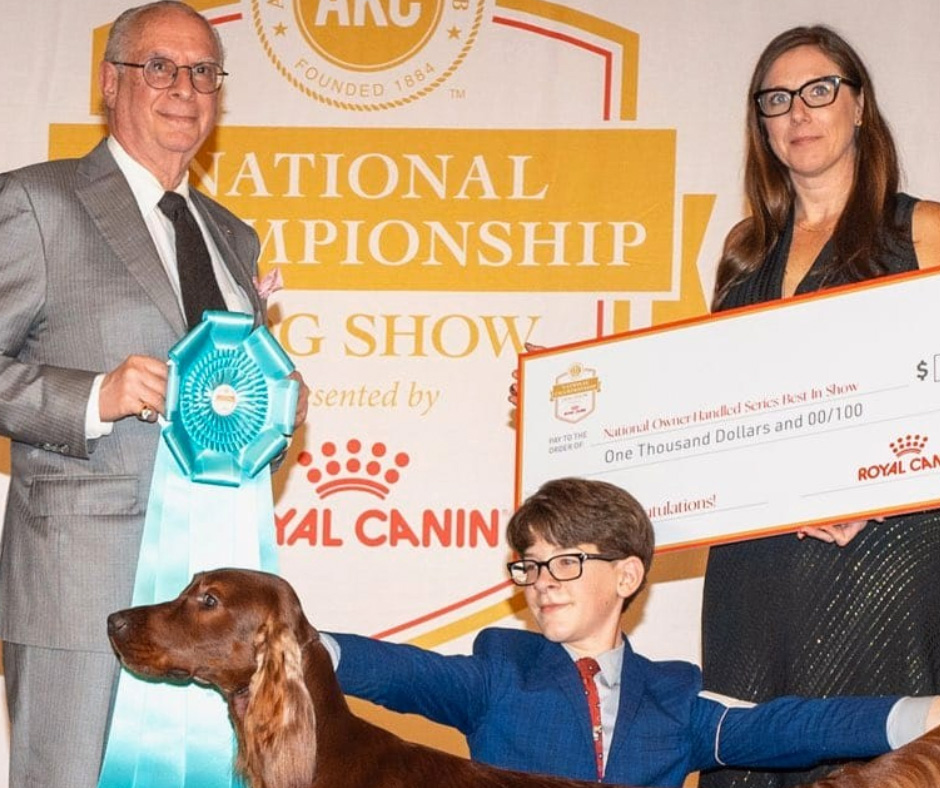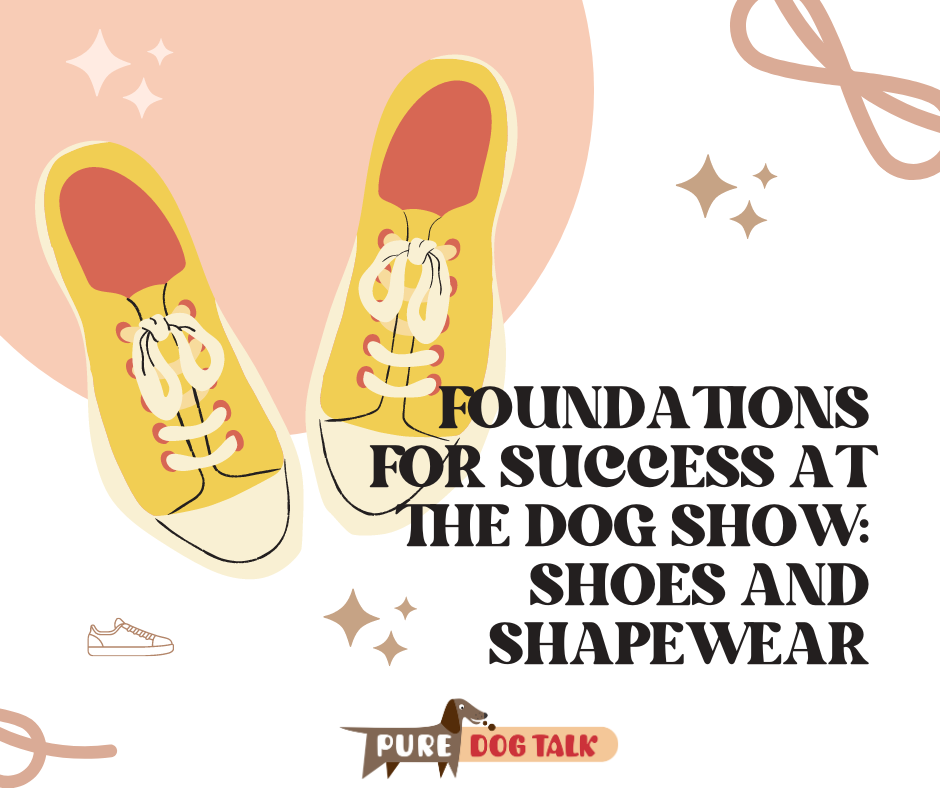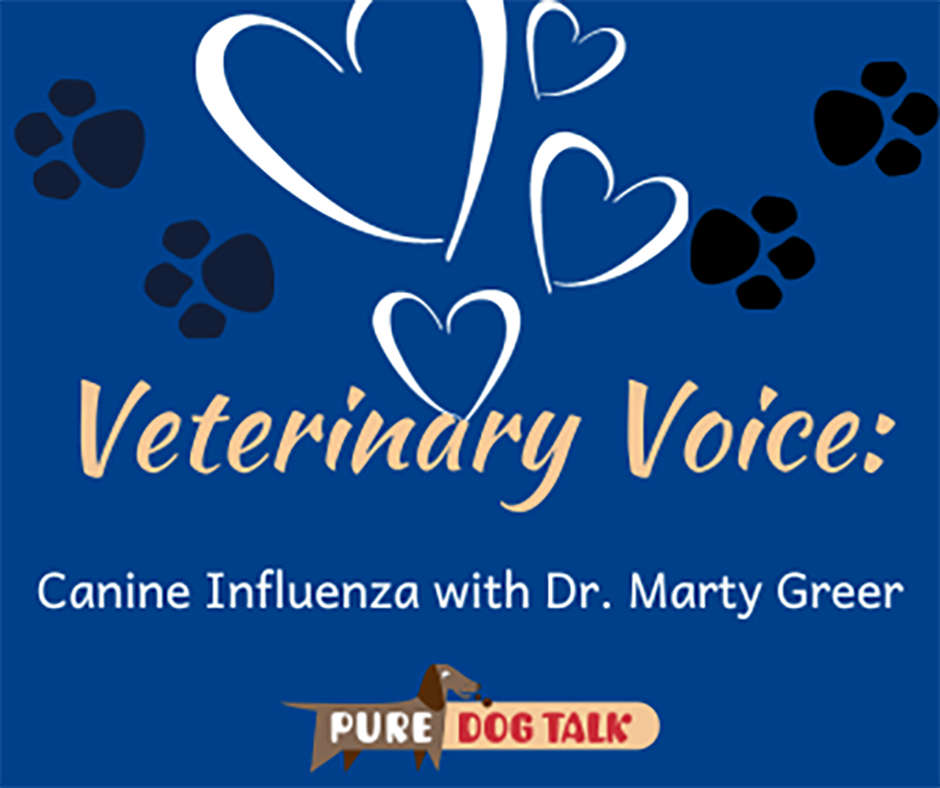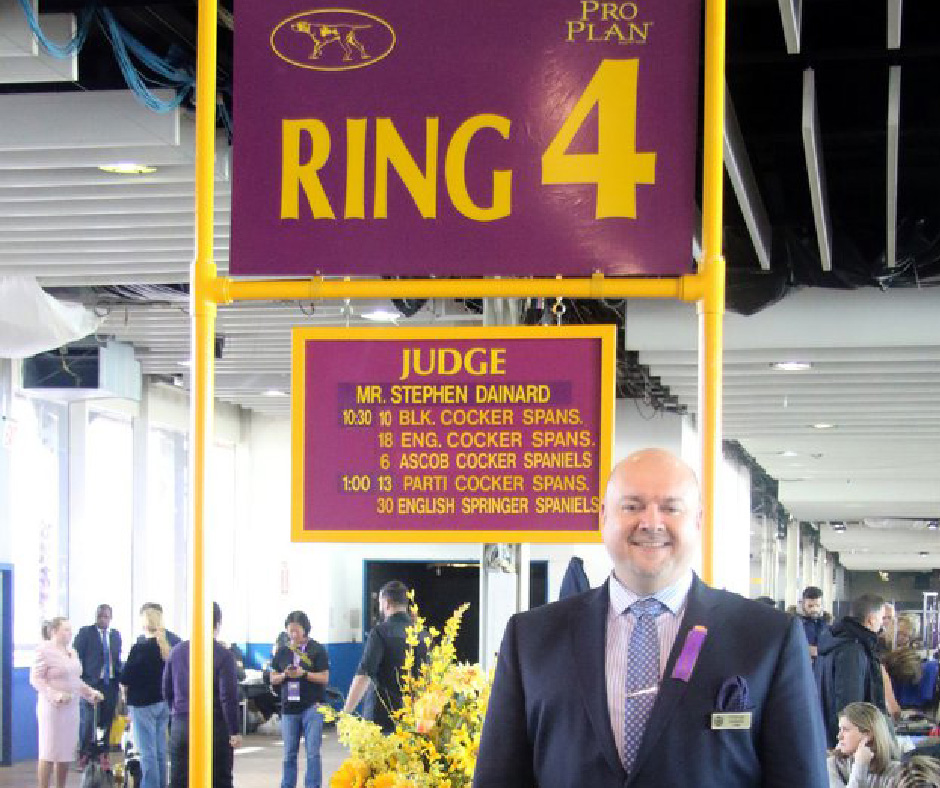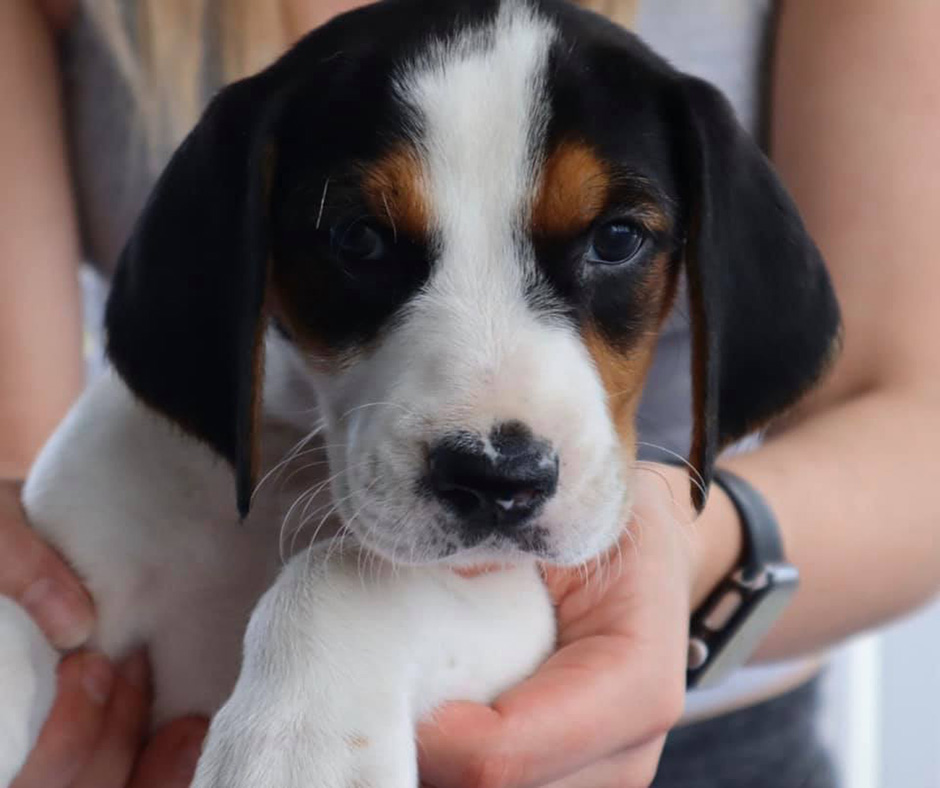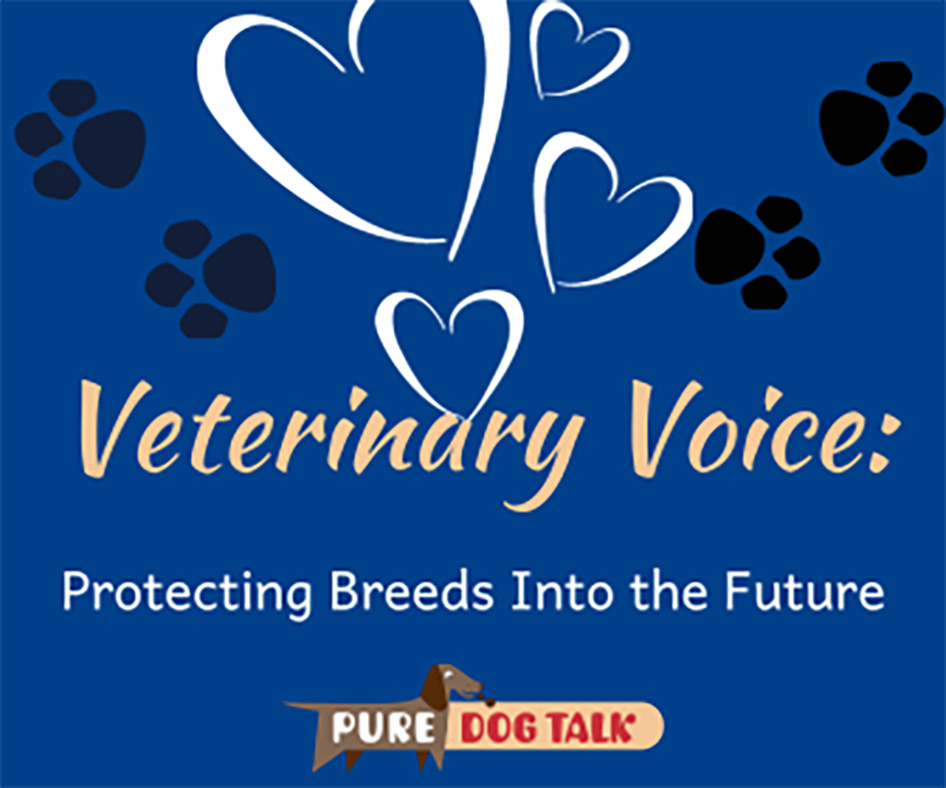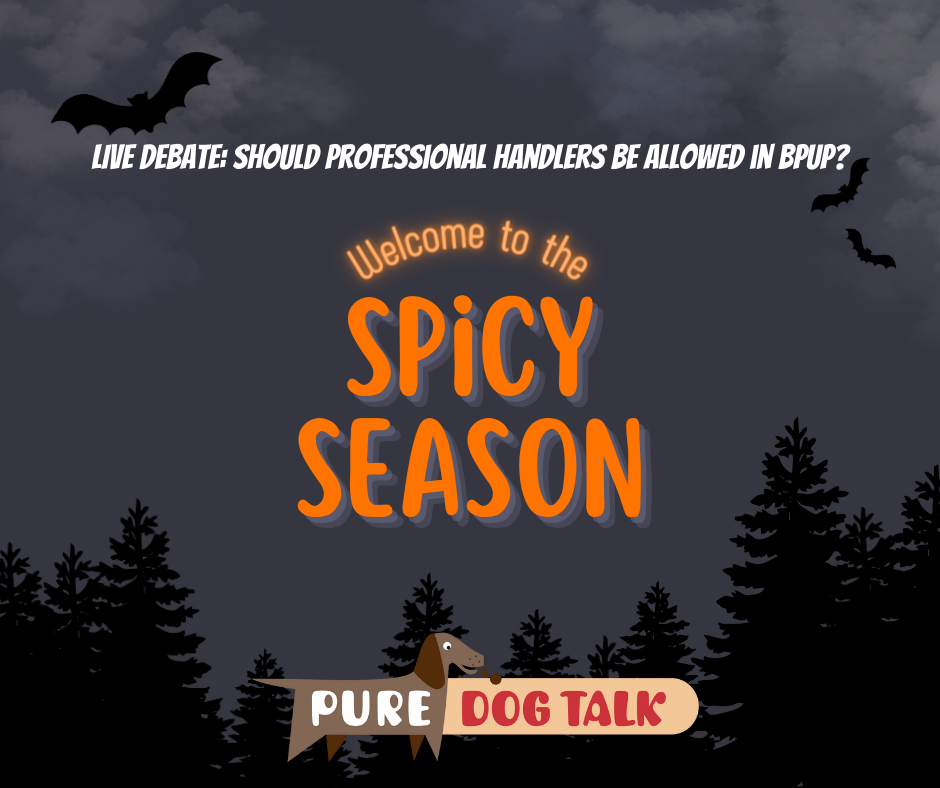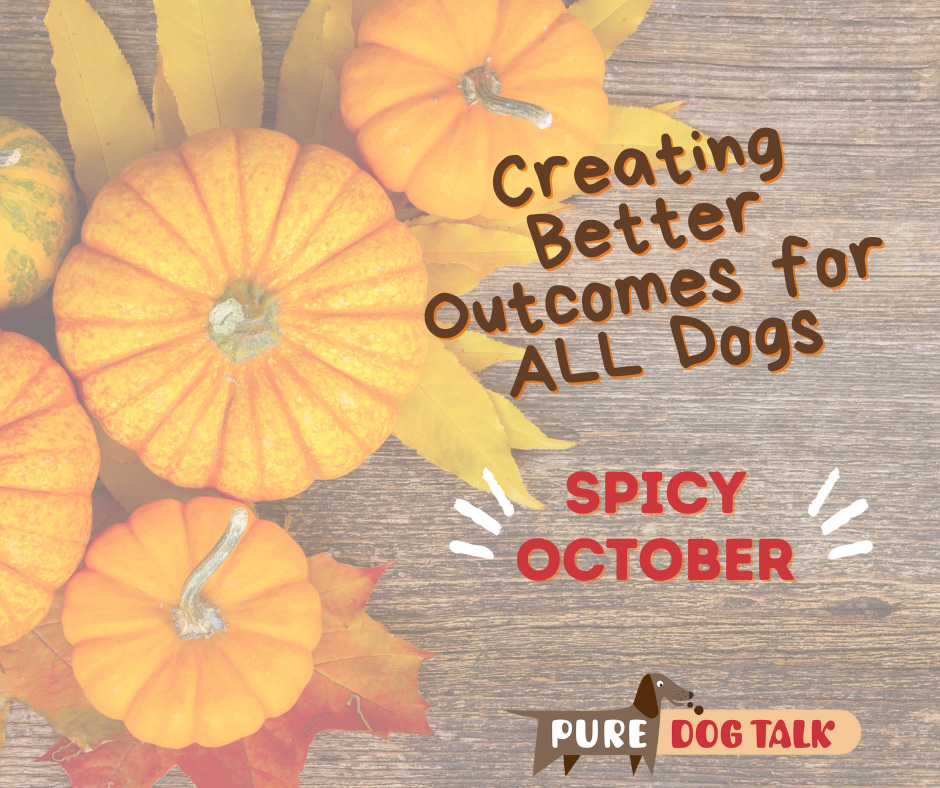613 – Junior Handler Wins NOHS Finals in Orlando
Junior Handler Wins NOHS Finals in Orlando
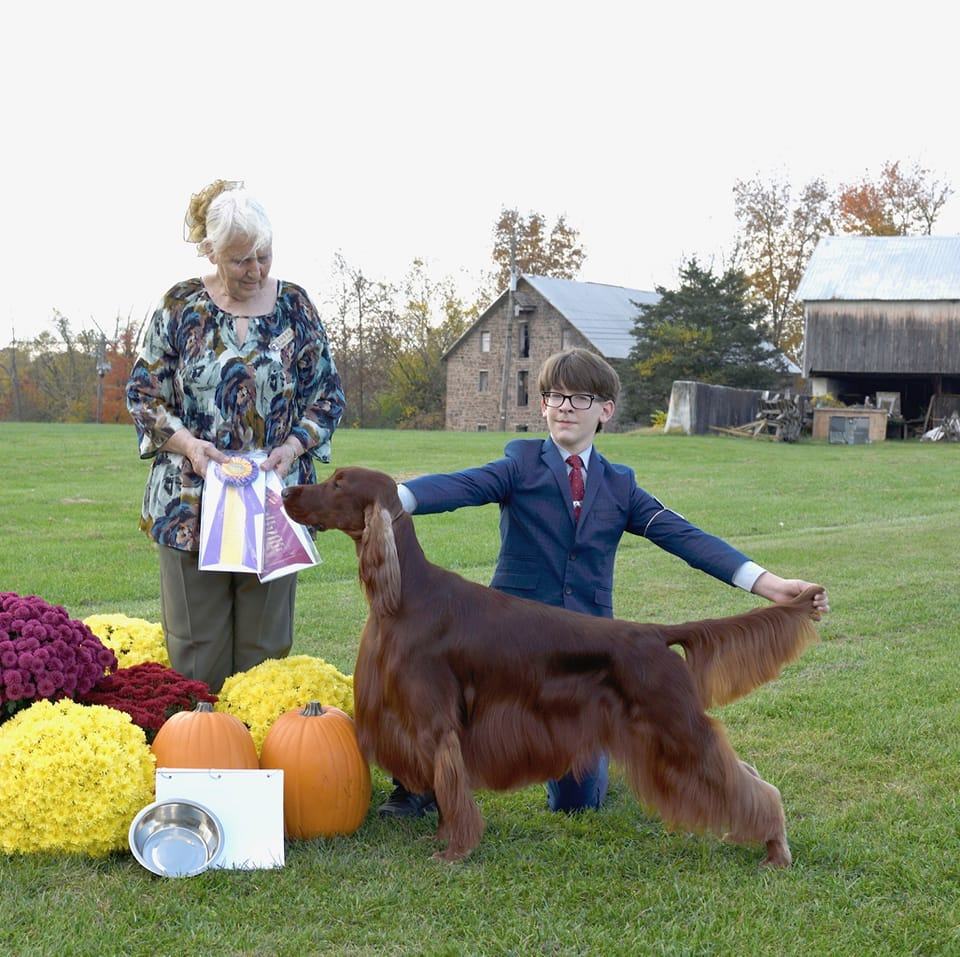
Adam showing his dog to Best of Breed.
The 2023 AKC National Owner Handled Series Finals was won by 14-year-old Adam Kucera and his two year old Irish Setter, Stryker. Adam and Stryker’s breeder, Patty Fanelli, join host Laura Reeves to share their story.
“At (Adam’s) first show, he beat me for Winner’s Dog,” Fanelli said. “It was one point with the brother. The next show was the Potomac Specialty. He went best in sweeps and he took a five point major and went best of Winners and best puppy.
“And I said to him, “You just took a five-point specialty major.” And he said, ‘I don’t even know what that is.’ He sure knows now.”
Stryker is Adam’s first Irish Setter that his grandmother arranged to purchase from Fanelli. He showed a Boston Terrier first, but really wanted to show a bigger dog.
Adam says he does all of Stryker’s grooming “except the clipper work because I am so afraid he’s going to just move and it’s just going to go, it’s all gone.”
The most challenging part of training Stryker, Adam said, was teaching him to freestack “Because he always just wants to jump, he always just wants to jump on my shoulders and thinks it’s time to play as soon as I hold a treat and not hold him.” A 4.0 home-schooled student, Adam says he practices with Stryker every morning before completing his school work.
Competing in NOHS gives Adam and is family more time to spend at the shows.
“My first show, we went to the show and I didn’t win the breed,” Adam said. “We went to go watch the groups and we saw that there were two groups going and we were like ‘why are there two, there should only be one?’ So then we found out what owner handler was. It’s kind of hard to show an Irish Setter. There’s not that many owner handlers out where I live, so if we want to stay a little bit longer at the show, we can do owner-handled and that gives us stuff to do and it’s a really fun competition.”
Adam has set lofty goals for himself and his dog. His remaining goals for Stryker include winning best of breed at the National Specialty and winning the breed at Westminster Kennel Club. He dreams of becoming a professional handler and breeding Irish Setters in his future.
Take a listen to the entire episode for more from this outstanding young man.
612 – Clubistry: Websites Designed for Dog Clubs
Clubistry: Websites Designed for Dog Clubs
Host Laura Reeves is joined by Jennifer Johnson and Brent Wiethoff from Dialogs who have created and are building a service called Clubistry. The service designs websites specifically for dog clubs.
“Younger generations are not as keen to join clubs,” Johnson said. “They don’t always really know that there are parent clubs or that there might be a value to, or something that they can gain from joining their national parent club. And part of fighting that is to have an online presence and online applications.
“We see a lot of people who don’t want to download a PDF. If I have to mail something, I have to go find a stamp. I have to find an envelope. I don’t know where they are. I don’t use them very often anymore on purpose. Moving applications to an online form helps increase the number of applicants you get because you can fill it out all in one step and submit it at it’s done as opposed to, ‘that looks like something I want to do, but I’ve had to download this and now I have to cook dinner. So I’m just gonna set this aside’. And then they never get back to doing that thing.
“A Facebook presence or other online platforms becomes more important these days because this is where people go to find out about information and there’s a lot of bad information on social media. So it’s… really important for clubs to have an official presence on social media. So they have a voice. They have an official representation and an official voice. You can’t really ever stop the bad voices, but if you are not one of the voices, then all they hear is the bad stuff.
“Anybody can spin up a WordPress website and you buy a template and then you start dropping your own content into it and it breaks. The design breaks. It looks bad. It doesn’t look good on mobile. The person who had the login information leaves the club or your volunteer moves on to other things. Or you’ve hired somebody off of Craigslist or Facebook Marketplace to do the work for you. And now they’ve gone on to college or a girlfriend or a different life and are no longer available.
“Domain names, you register your domain name, somebody in your club registers your domain name. And then it was 30 years ago and nobody knows who it was that did it. I have seen clubs lose their domain entirely because they don’t know who has the login information for it, and then it gets purchased by somebody else to be held for ransom for a large amount of money.
“Same with the websites, somebody built it, nobody knows who or nobody has the login information anymore. Volunteers die or move on to other things. All these things happen. We’ve heard all these stories. We’ve got our roster in an Excel sheet, and you have one person who’s in charge of the roster, but they have another person that’s helping them with it. Now you have two copies of the roster.”
For more on this great service, listen in to the entire episode!
611 – Foundations for Success at the Dog Show: Shoes and Shapewear
Foundations for Success at the Dog Show: Shoes and Shapewear
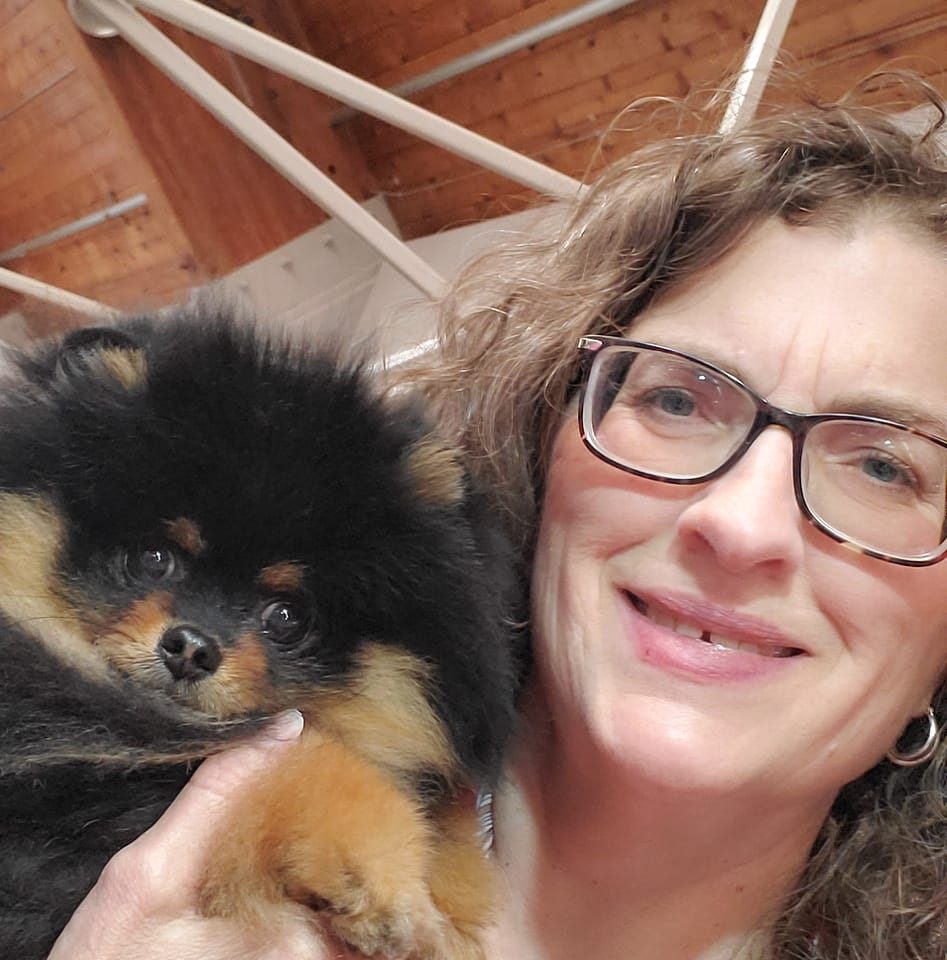
Veronica Wolfe, owner at Best in Show Clothes
Veronica Wolfe, owner of Best in Show Clothes, joins host Laura Reeves with professional advice on shoes, shapewear and other foundations for success at the dog show.
“I’ve become passionate about good shoes,” Wofe said. “And I’ve been known, a couple handlers can attest to this, of grabbing people and going, you need to get out of those shoes because you will have hip and knee and back problems before you’re 35 if you don’t. So, yeah, it’s important.
“If you can find a small shoe store in your area that actually has a fit specialist … I would be go to one. I would run to one. But you also need to know a little bit about your own foot issues. Do you roll in? That’s called pronating. Do you roll out? There are different things. Do you have high arches? Low arches? There are running stores now that you can go in and put your feet on things and it will show you your arch. There’s a couple things that you want.
“You do want some cushioning. We’re in concrete all day. I’m not running circles, but I’m standing in a booth. You know, we’re in concrete all day. People are running all day. You need something with some good cushion.
“You want to look for a non -slip sole. Some of the stores online now actually actually say non -slip. If you need an arch, you need a good arch. Arch supports. You can get them for $40, $50 at running stores. I’ve seen them in sections sometimes at like TJ Maxx and Ross. And the over -the -counter ones, I’ve been told by a shoe specialist, are as good as the custom $400 podiatrist ones.
“It almost seems like there’s more options for guys and you’ve got this balance, right? So you can get a nice leather shoe for an indoor show, but you’re going to ruin that leather shoe at eight a.m. in the morning when there’s dew outside. So, you’ve got some nicer looking skater shoes, but the problem with those is there’s generally very little arch support.
“I have a number of (women) clients who do not like the way their calves look, and they’ll be in boots even in the summertime. I think they look quite attractive if you’re wearing a skirt and a blazer or maybe if you want a denim skirt. I would just say try and keep a nice line between them so you have a skirt then you’ve got a gap and you’ve got your skirt. Maybe black hose or tights that make that transition seamless, so it’s not like this distracting line there. But you’ve got some really comfortable boots out there that will have that arch support or it’s easy to insert one in it.
Pro tip from Laura:
Pro tip from a handler perspective: have more than one pair of shoe for each day.
Change shoes, because even if it’s just changing the angle of your heel this much, it makes an enormous difference. Pat Rogers is the one who taught me that a million years ago as a handler, change your shoes at lunch, and it makes all the difference in the world.
Pro tip from Veronica:
don’t let your shoes get run down. If you are an exhibitor that’s going out every weekend, six months max, you need to toss those shoes.
For more on the essentials of foundations under our clothing, listen in to the full episode.
610 – Canine Influenza Outbreak and How to Manage It with Dr. Marty Greer
Canine Influenza Outbreak and How to Manage It with Dr. Marty Greer
Dr. Marty Greer, DVM joins host Laura Reeves to discuss the current Canine Influenza outbreak, how to manage it and how it became an overnight sensation in the public.
“Well, partially it’s media, partially it’s misinformation, courtesy of the media,” Greer said. “And partially there was a lack of vaccine. The vaccine insufficient supply appears to have been corrected or is being corrected.
“So, things are better. In 2004 when this first happened, we didn’t have any vaccine and no dogs in any part of the world that we know had immunity to this. So Ron Schultz,the vaccine guru from University of Wisconsin, made a recommendation that all dogs should be vaccinated against this, that it should be considered a core vaccine because no dogs had natural immunity.
“It was like when Parvo happened in the late 70s and early 80s came out of nowhere, there was no immunity and bada bing bada boom we’ve got dogs that are desperately sick and dying.
“Influenza is a respiratory disease and it is classified in the CIRD, the canine infectious respiratory disease complex. So a lot of times that’s either called CIRD or it’s called kennel cough. There’s a whole bucket of stuff that falls in the kennel cough bucket and it’s not necessarily a diagnosis. It’s a description. It’s a collection of disorders, diseases, but it’s not necessarily a diagnosis.
“So we have had outbreaks of canine influenza (before). The first known outbreak was in 2004 in a colony of Greyhounds, I believe in Florida, and they think it was a mutation from the equine version of influenza.
“And that was H3N8. There’s now also an H3N2 that we have identified and can vaccinate against.
“Like all respiratory diseases, it causes a cough, but in this particular case, influenza can cause disease severe enough to cause hemorrhagic pneumonia and the death of patients. And there have been patients that have died in this last outbreak that occurred this fall (at the Golden Retriever national in Albany, Oregon).
“It had to get to the Golden Retriever National somehow. It’s not like the Golden Retriever group invented it, just drummed up a new virus, but it appears that it reared its ugly head there. There were a number of dogs that were there that then went back to all over the U.S.
“So, they were East Coast, Midwest, everywhere. And these dogs were coming back with respiratory disease and it was easy to just say, ‘Uh, it’s kennel cough, here’s some medication, you’ll be fine.’ But one of my associates was involved with some of the Golden Retrievers that were at that show and I was in surgery the day she walked in and said, ‘You know, we’ve got these dogs that are coming back from the Golden National with a pretty bad cough.’ And I don’t know why but the hair kind of stood up on the back of my neck and I said, ‘We need to get these dogs tested for what kind of virus or bacteria we have.’
“There was just something about, I don’t know if it was her tone of voice or the number of dogs that were involved. There’s something about that conversation that just said to me, ‘We have problems.’
“So, we swabbed the most recently started to cough dogs. We didn’t want a dog that had already been coughing for a week by the time we did the sample collection and submitted that to our local diagnostic lab at the same time that a number of other people were submitting samples.
“We weren’t the only ones by any stretch of the imagination that felt we need a diagnosis on this. So, at our diagnostic lab in Wisconsin, they came back with influenza A. At some of the other diagnostic labs, they came back with influenza H3N2, I believe. Not that it makes that much of a difference if it’s H3N2 or H3N8. It’s influenza anyway. So, there were multiple labs with multiple dogs that had all been at the same event.
“They were coming up with the same answer. And so, when I walked up to my front desk last week and on the computer screen in front of my receptionist, there was a message from the media that said, “Mystery disease.” I was like, ‘It’s really not this mysterious, folks.’
“And so, we need to start addressing it by getting more dogs vaccinated. So, it’s time for us to not call it a mystery disease. It’s time for us to make some decisions on whether this is a lifestyle vaccine or a core vaccine and get some of these dogs vaccinated that are at risk because this is a very serious illness.
“No question that if the dogs don’t have immunity, it’s a very serious illness. Like I said, it causes hemorrhagic pneumonia. Some of these dogs are dying. Even if they’ve been put on ventilators and all the really high-powered stuff that they’ve been doing, sometimes we’re still losing dogs to this. And it’s really a shame to lose dogs to a disease that we can vaccinate against.
“I don’t care if you’re doing agility or fly ball or competition with hunt test or field trials or confirmation. If you’re going to the dog park, if your dogs are going to the groomer, any dog that qualifies as based on lifestyle for bordatella vaccinations should also be receiving influenza vaccine.”
609 – Critiques, Communication and Common Sense in Dog Shows
Critiques, Communication and Common Sense in Dog Shows

Steve Dainard judging Spinoni back in the day, when Laura was still showing dogs.
Canadian Kennel Club judge Steve Dainard is back with host Laura Reeves for part two of a probing and thoughtful conversation about critiques, communication and common sense in dog shows.
“So we know that every rule and regulation that came in probably had a foundation in someone doing something wrong,” Dainard notes. “Judges need to keep their interactions in the ring, not be too conversational in nature. Well, then all of a sudden you’re going to get a whole population of judges who take us to the nth degree, and they’re even afraid to have any type of communication, apart from instructions to the exhibitor.
“So, I think there’s a fine line between having this full on getting caught up in the ring, but also having, an opportunity to be able to share meaningful dialogue. And I think that we can do that. I think that maybe we’re just not trained really well to do that. So maybe we need to have a discussion about what does that look like.
“I get it, writing written critiques or an oral critique or whatever can be scary for many people. People don’t like change, and whether it’s not because you don’t have the goods or you don’t know whatever, maybe that’s what the fear is based in. But I think culturally, you just hit the nail on the head, it’s not encouraged to have that dialogue, that communication, that interaction. And what it does, it creates silos within our sport. And this is not what we need. We need to be able to have a mechanism in place so that it’s okay to have a conversation.
“And that conversation doesn’t need to be precipitated by the fact that I’m pissed off because Laura didn’t put me up and I’m going to take a run at her after judging. And I got the rep coming with me because she crossed a line.
“Having a written critique foundation in your toolkit as the basis for how you’re trained to evaluate dogs creates a much easier conversation when that’s the way you’re programmed and how you’re picking your winners.
“I think that the fear of error is like, (exhibitors are) judging me, right? So I can see why people would be afraid of that until you get really good at it. And you have the conviction to be able to say, this is my process. I think it could be a little bit of an overwhelming concept, but the only way we rip that bandaid off is by diving in and starting to practice it.”
Listen to the full episode for insights on the role of judges in promoting responsible dog breeding and ownership and much more.
608 – Dog Judging Process and Ethics with CKC Judge Steve Dainard
Dog Judging Process and Ethics with CKC Judge Steve Dainard
Host Laura Reeves is joined by Canadian Kennel Club all-breeds judge Steve Dainard for part one of their conversation about the judging approval process, judging ethics and other hot button topics as we progress through “meat and potatoes” November!
“So how do we help judges move into a place of thinking more about structure and less about the ‘paint job’,” Laura asks.
“Some of the biggest challenge is, do (judges) have that breed specific knowledge,” Dainard replies. “And are we consistent in this application? Are we judging fairly and equitably and being consistent enough so that people that are watching, and in particular breeders, can follow and they can say, this person really knows my breed?
“CKC judges get scrutiny from other non-Canadian judges about how we get there too quickly. and that maybe you know in your country, it takes it takes longer to get there. So, let’s agree that maybe somewhere in the middle might be more ideal.
“Organizing bodies do the best they can, given the current environment, to come up with a fair and equitable process. They don’t always get it right and many times changes just are just so laborious, it takes so long and really, what is the right fit. So, I understand those challenges.
“So, I think we need to work within the constraints of what we’re handed with hopefully trying to make improvements along the way. Some of those challenges are making sure we have breed specific knowledge, that we’re not missing the hallmark characteristics of a breed and just going for a more of a generic exhibit.
“If you have to ask, ‘Is there a Rule against that’, what’s happening is your moral guideline. Your compass is probably kicking in. I think you’ve already answered your question. If you have to question yourself like that, whether there’s a rule or regulation specifically forbidding that is irrelevant. You’ve already answered your question. It should not happen.
“We were raised in the sport. We spent decades in the sport. We know a lot of people. So now because we’ve chosen to change hats to now become judges, all of those relationships and those hotels we shared and vehicles we traveled in those don’t go away.
“My interpretation is that when that’s said as the reason to justify a win, my gut goes to ‘Have you really evaluated everything. Did you fairly look at the dogs in competition.’ Many times, I don’t think you’re really did that. I think that the political excuse was the easy excuse for you to justify that in your mind and poo poo the credibility of the ethical issue around the judging process.”
607 – Keeping Foxhounds Alive Into the 21st Century
Keeping Foxhounds Alive Into the 21st Century
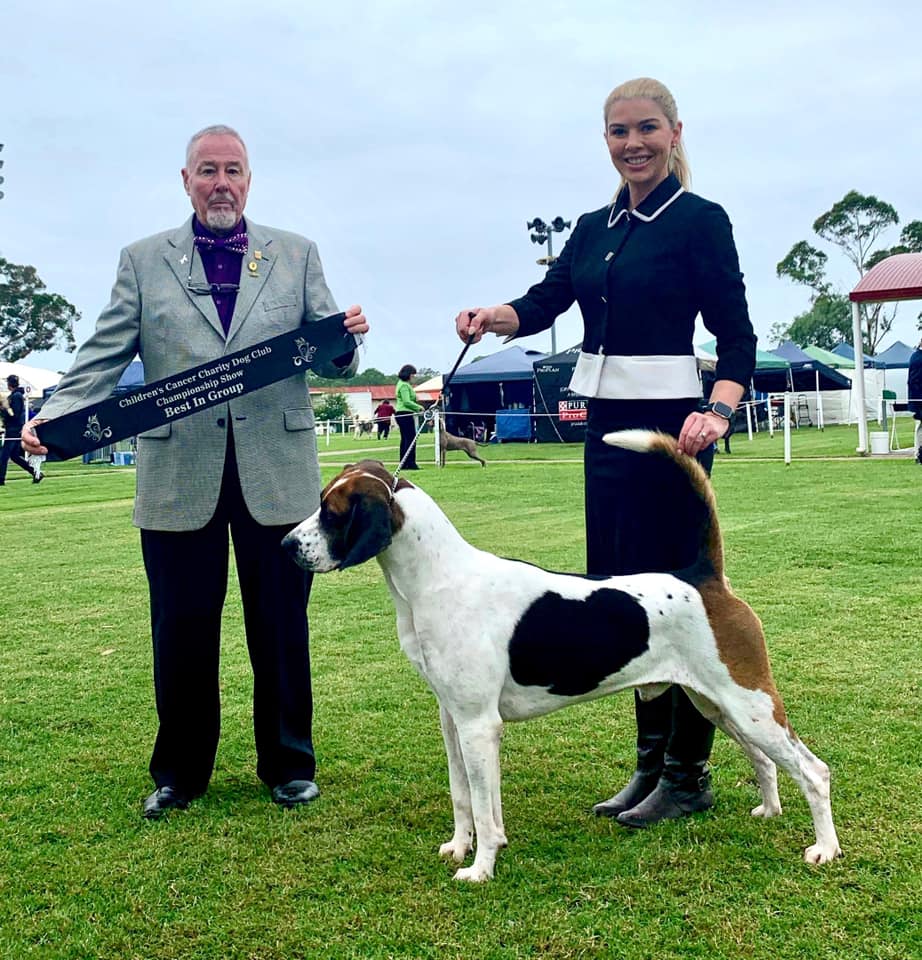
Brigette Bryson with one of her Foxhounds.
Brigette Bryson, second generation breeder of Foxhounds at Foxhunt Kennels in Australia, joins host Laura Reeves in a wide ranging conversation about English Foxhounds, preserving the history they represent and how she hopes to keep the breed alive into the 21st century.
There are three breeders of English Foxhounds listed on the US National Club website. In 2022, the breed dropped to last place in numbers of dogs registered with AKC. Although the breed lives on in the packs around the globe, their popularity has certainly faded from their heyday when hunting fox was both useful and fashionable in much of the world.
“I don’t know if that’s ever going to change dramatically,” Bryson said. “I have this conversation with people regularly. I don’t know that you can ever make them mainstream. Their history is so deep. And it’s entrenched in people’s brains that this is a hunting and a working breed that’s not gonna fit in my suburban backyard.
“So I don’t know if you can ever change that. My goal is just to see them survive. That will happen in the packs. There’s many packs. You know, we’re not gonna have a figure of how many dogs exist in those packs, but they’re there. And I think that they will always be there through people like me that have maybe grown up in that pack and they’re obsessed with the breed, so they’ll keep it going.
“What I would like to see is if we could have a few breeders in each country breeding them, that would be a success for me. It’s enough to keep them alive and not let that piece of history die for me. I think I really enjoy the history of the breed. I love that almost every kennel club you visit around the world is gonna have a painting of Foxhounds hunting. I think it’s important to maintain it for that reason.
“I of course would love to see them become more popular with the general public. I just don’t know if that’s possible. The sizes of houses and properties and everything, it’s gonna be the same problem for all large breeds. It’s getting smaller.
“And realistically, as much as you can raise them to live in a smaller environment, it’s not ideal for them and people would have to put in a lot more effort to meeting their energy needs. My goal is just to get them out there with breeders around the world. That’s what I’m trying to achieve now.
“There’s not a single registered breeder that has had a litter in the UK that I can think of in the last 10 years. We have one active registered breeder in New Zealand who’s fantastic. And there’s a few really healthy packs over there that have some dogs from us as well.
“And in America, there’s a handful if they even keep breeding, but they start aging out too. And that’s what’s happening here. There was four main breeders that we had, myself and my parents before me worked in with. One of those hasn’t bred a litter for a decade. And the other two are at the point where they’re saying to me, I don’t know if I’ll have any more just because they’re getting a bit older.
“And (Foxhounds) are incredibly healthy. Now that’s another one that’s complex. Foxhounds have been largely inbred since the beginning of time. But with that, only the strong survived. There is no hereditary diseases in the breed.
“Part of that is that there hasn’t been human intervention. So, all the debates that people have about inbreeding, and I have this debate with people regularly, because they’ll say to me, you’re gonna have to outcross. And I say, well, you need to outcross because you’ve got problems you need to fix.
“But if I don’t have any problems, why do I need to do that? A litter we had last year was from a six -year -old maiden bitch, 15 puppies. So, we’re not having those issues that other people have. They’re incredibly healthy. And people buying these dogs that they spend thousands and thousands and thousands of dollars trying to keep alive, I can sell you a Foxhound that will only have to go to the vet for its vaccinations.”
606 – Protecting Breeds Into the Future
Protecting Breeds Into the Future
Dr. Marty Greer, DVM joins host Laura Reeves to discuss AKC’s newest service for preservation breeders. Greer was actively involved in AKC’s development of the Purebred Preservation Bank, taking the idea from the Otterhound Club of America. We had the conversation with Joellen Gregory early on about the Otterhound’s semen bank, and AKC has taken this and developed it into something that’s available for all parent clubs.
“(PPB will allow) AKC to fund the long -term storage of semen that no longer has an owner that wants to manage it,” Greer said. “So, you don’t necessarily have to have passed away for this to happen. If you’re at the end of your breeding program and you’re sitting there with six beautiful dogs that have semen frozen, and you’re like, ‘Well, I don’t have anybody I’ve really mentored and my kids don’t want it, so where do I go with this?’
“That’s when you go to the AKC website, you pull up the information on there, you sign the document that allows AKC to take ownership. And once you hand it off, you no longer are in control of that part of the semen. You may send all of your dog’s semen, you may send part of that dog’s semen, you may send all the semen that you have to the AKC, and AKC will then pay for the long -term storage.
“Every breed club makes their own rules. Your parent club can put together their health committee, their genetics committee, a special committee for this. Your breed club will sit down and with some ideas from what other breed clubs have done, be able to say, ‘This is how we want the semen disseminated. Does the bitch have to have a CHIC number? Does she have to have these certain criteria? When is it appropriate to use? Has she had a litter before?’ All those kinds of things, your breed club can decide.
“But as you release the semen, you can’t say, ‘Well, I don’t like Susie Smith.” Susie Smith is never going to get to touch my semen ever, ever, as long as I live, over my dead body. Maybe it will be over your dead body because now it’s no longer yours.
“Fifty years from now and 100 years from now, that’s what we’re looking at. We’re not looking at what happens next Tuesday when a bitch has to be bred. We’re looking at 100 years from now. Is your dog still of value? You might say things like, ‘Well, styles of dogs change,’ and indeed they do. But sometimes those foundational dogs are structurally what you need. Sometimes those foundation dogs predate certain genetic disorders that have really worked their way deeply into the gene pool and could be very hard to breed your way out of.
“AKC’s role in this is to pay for the semen storage and to register the puppies. That’s it. AKC is not there to start saying, ‘Well, we want you to do this with this and we want you to do that with that. And you have to have faith that 100 years from now, this mission, this vision is going to be held true. But it’s not about Susie Smith. It’s not about you. It’s not about (any individual dog). It’s about the overall health of the breed and where we can go with some of the genetics.”
605 – LIVE Debate: Should Professional Handlers Be Allowed in BPUP?
LIVE Debate: Should Professional Handlers Be Allowed in BPUP?
Our final installation for Spicy October is a LIVE@5 debate between an owner handler and a professional handler regarding the hot topic of the rules around the BPUP, 4-6 months puppy competition.
Natalie Thurman, owner handler:
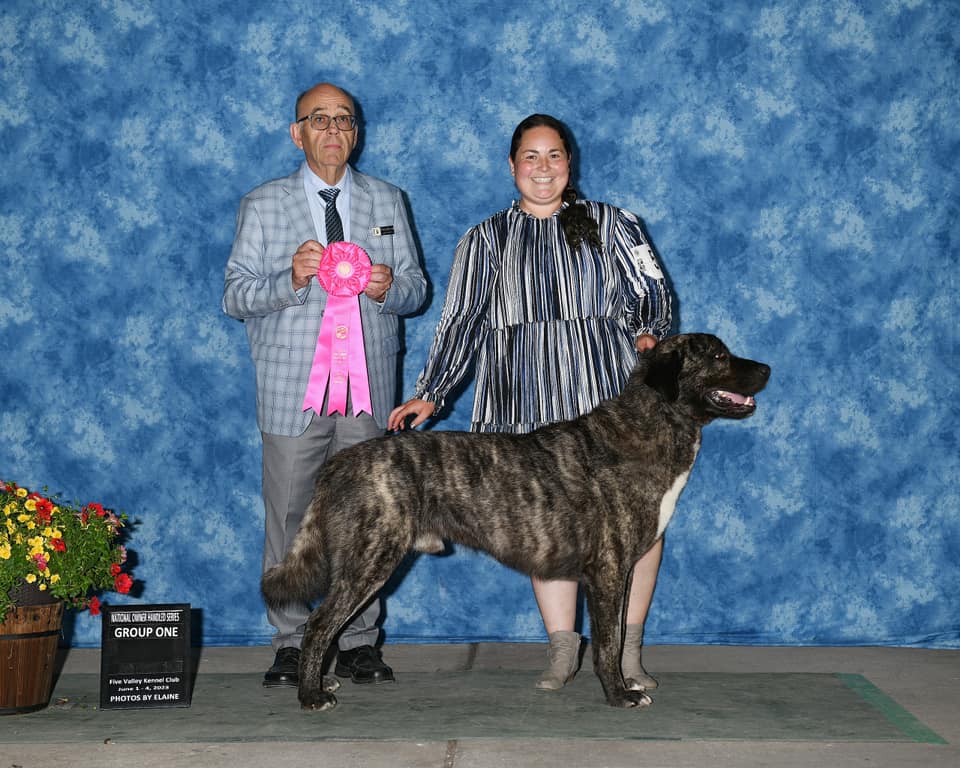
Natalie Thurman and Ares winning Owner Handled Group.
I do think that there are people who start out and it is intimidating to go up against the Laura’s and the Karyn’s of the world because you just make it look so easy and then we try to go do it and then it’s not as easy. Not even a little bit. I mean I know it’s why we have owner handled groups. But if you’re not getting to the owner handled group either BPUP could be a good place to feel safe as a non-experienced dog show human.
Karyn Cowdrey, professional handler:
I believe everyone should have the opportunity, including breeder owner handlers, to show in BPUP. Why? Because the fact of reality of our life today is there are fewer and fewer handling classes people can get to. As handlers, often we’re the ones teaching the handling class and we don’t get to work our dogs in the environment. As a handler, it is important to me that my puppies that I own, that I bred, that I decided to keep, get the best experience they can in the
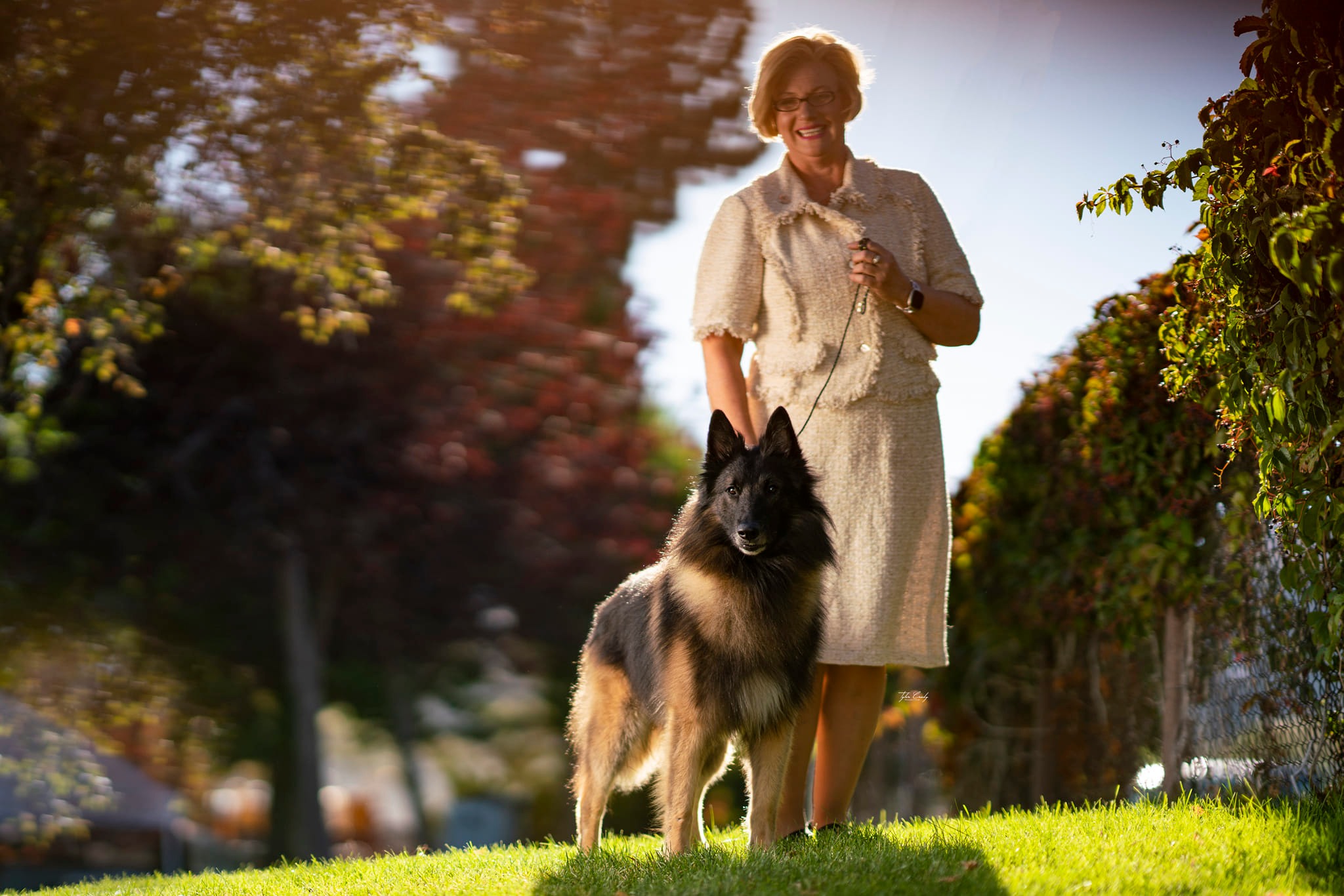
Karyn Cowdrey, BlackFyre Handling Services.
start of life in the ring. I shouldn’t have to hand them off to a total stranger.
Laura Reeves, host and moderator:
The concept (of BPUP) is that the American Kennel Club wants to support the novice handlers and that the simple presence of someone more capable than they are, whether they be a professional or a breeder or what have you, is unnerving. And I don’t know that that’s a great solution. I think we all learn by being challenged, but I know it is something that is a thing.
AKC gets banged a lot for not being encouraging and inviting and we as the representatives of the AKC get banged for the same thing. I sincerely believe that for people who think it is a big deal, they should get to do that. They should get to have that moment.
Hope is what gets us and keeps us. And I guess that’s what I would pin Best Puppy to. Is that baby inkling of hope. That tiny tingle of hope that the very new person gets when they get their first puppy.
And they are so excited and they don’t know what the hell they’re doing. And their breeder’s probably shoving them in the ring. And they’re really encouraging them to do this. It’s hope. And I guess to me, when I judge it, when I see it, best puppy to me represents hope. It represents the hope that we as breeders have for those puppies that are in the ring. It represents the hope that those owners and handlers have for their new puppies. It’s hope.
BPUP represents the hope that those owners and handlers have for their new puppies. It’s hope.
The part of me that thinks that hope is important, thinks that owner handled being what is important and encouraging new people being what’s important, I see the argument to make it a quote -unquote safe space from professionals.
Join us for the full replay of this spicy hot topic.
604 – Creating Better Outcomes for ALL Dogs
Creating Better Outcomes for ALL Dogs
Host Laura Reeves is joined by the founders of For All Dogs — Chris Fleming of Pinnacle Pet and Martha Boden of SPCA Tampa Bay. This unlikely partnership grew out of a mutual desire to create better outcomes for all dogs, including retired breeding dogs from commercial kennels and adoptable dogs in animal shelters.
As we wrap up “spicy October,” this conversation about a powerful alliance of opposing forces stands as a testament to the positive outcomes when we work together for the good of ALL dogs, instead of tearing one another down.
Fleming is a broker for commercial kennels who sell puppies through pet stores. Boden is the director SPCA Tampa Bay’s animal shelter. They describe their partnership and friendship as serendipitous. Their work is beyond groundbreaking.
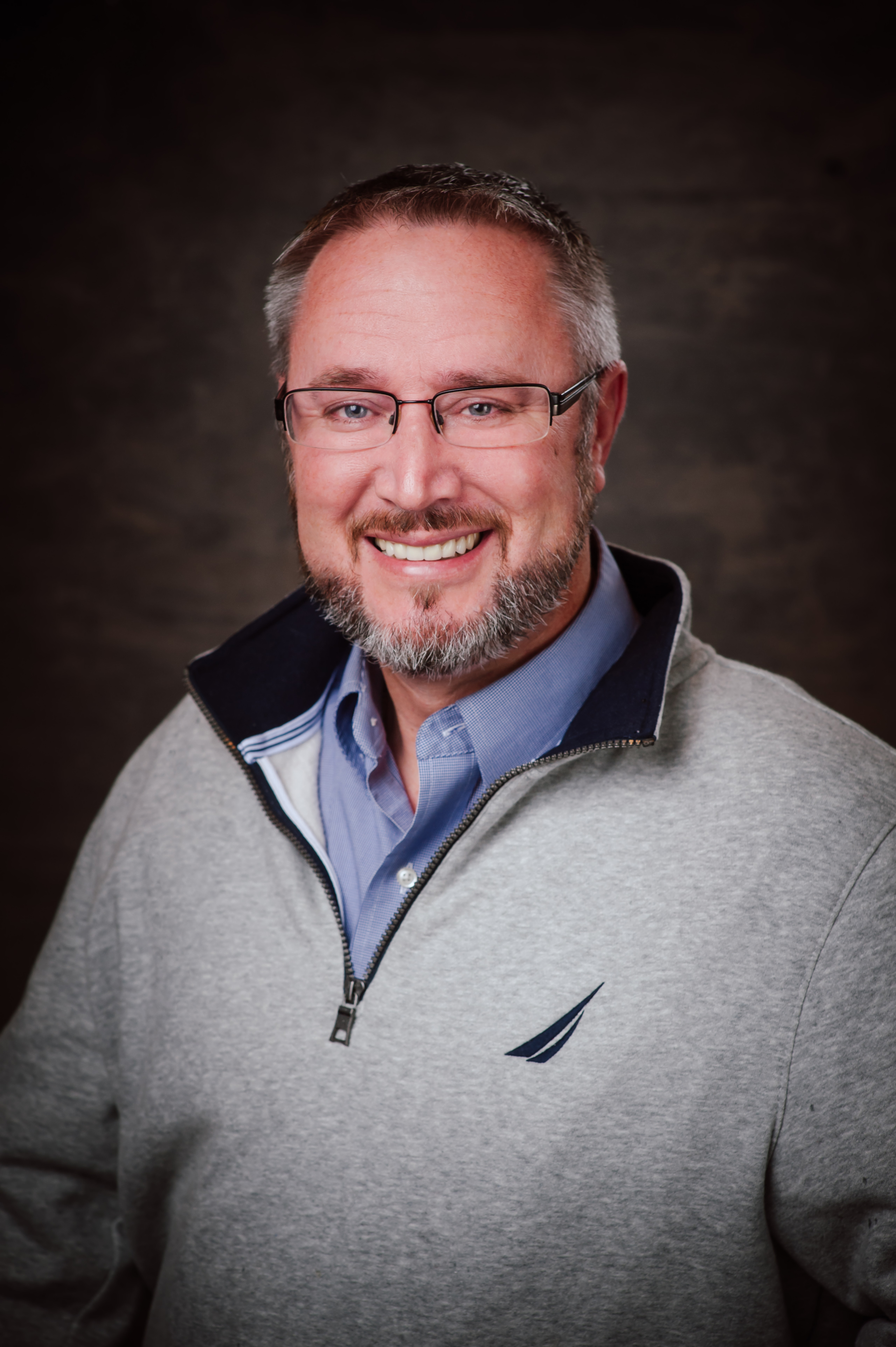
Chris Fleming, CEO Pinnacle Pet
In 2008, Fleming began working with his suppliers to improve their facilities and programs. After meeting Dr. Candace Croney in 2014, he started encouraging these breeders to come into compliance with the Canine Care Certified program she created. Listeners may remember the episode linked HERE where Laura spoke with Dr. Croney about this program.
“So, the benefits from the Canine Care, it’s data that has been just really kind of eye -opening for us,” Fleming said. “Looking at taking notes, breeders do everything from measuring humidity and air temperatures every day to stimulation or handling the pups that they deal with, really puts in a more hands -on approach.
“What we’re seeing is better socialized animals. We’re seeing healthier moms. We’re seeing when you’re focused and attentive to what they’re doing, the happier mom makes a happier pup, you’re having lower vet bills and it feels weird saying this now because it feels like common sense but now it’s, I can point to the science of this. So lower vet bills, happier healthier moms and puppies and being mindful of an appropriate retirement age.
“You also have a kennel that you’re getting moms out of the kennel retired at an earlier age. The puppies that they’re producing, there’s more of them. It’s better litter counts, lower veterinary bills. So from a business standpoint, it’s lower costs, increased profits. And so from an animal welfare standpoint, it’s happier dogs and kennel owners that are reporting enjoying the time in their kennel more.
“That leads into the For All Dogs program and it’s a pilot program for us because we’ve ran a few of the retired adults from canine care certified kennels. But this For All Dogs program needs to offer up a trusted source for breeders that are looking for either canine care certification or at least achieve those standards and have a trusted retirement partner.”
As Fleming and Boden talked after a chance meeting at an animal welfare event, they began to have more in depth conversations about their two disparate worlds.
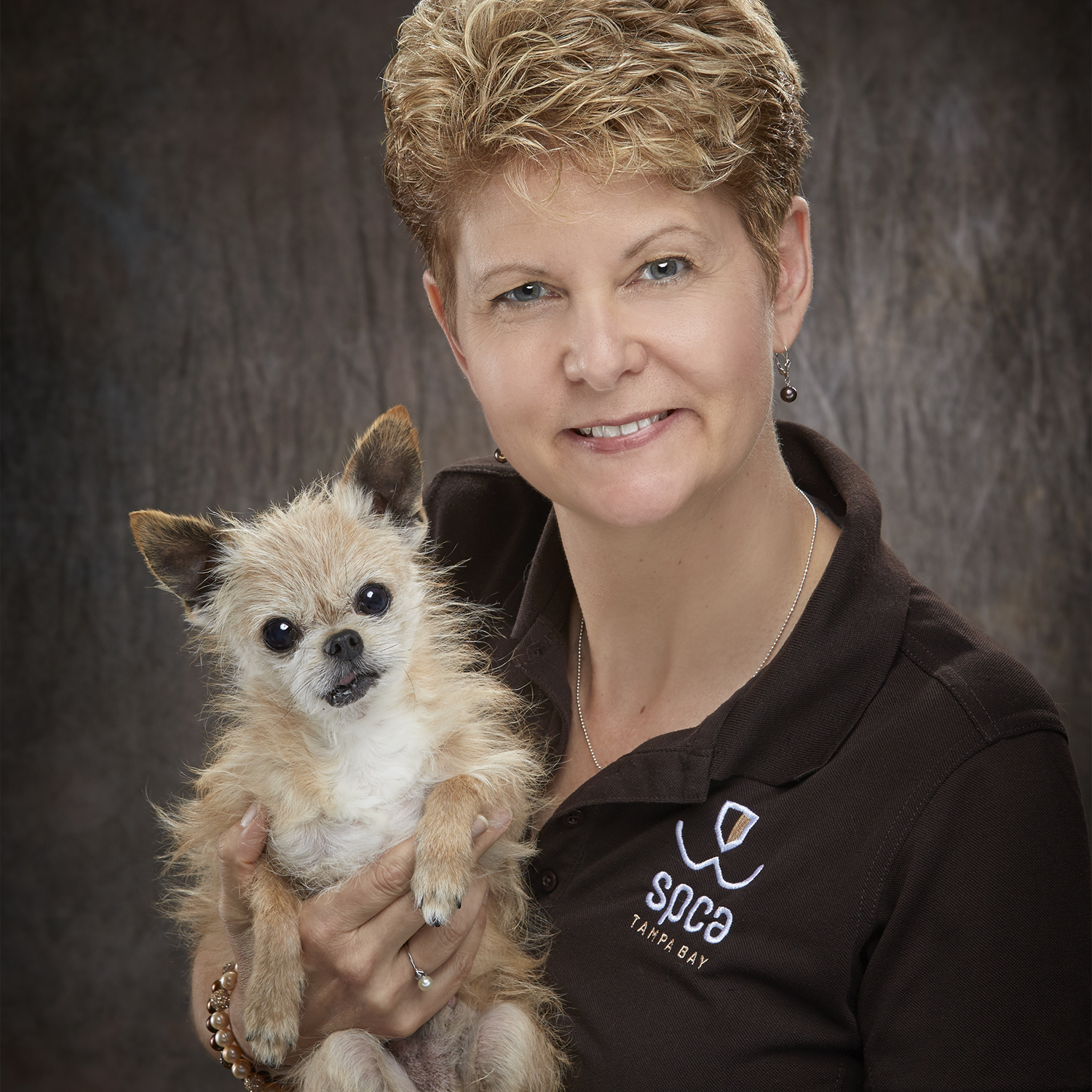
Martha Boden, CEO SPCA Tampa Bay
“I started to get a feeling for what a puppy distributor did,” Boden said. “And then as we were having these conversations, Chris started talking to me about Canine Care Certification and I thought, ‘Wait a second. This is not something that my world has been talking about at all. Like why are we not aware of this amazing thing that’s happening at one of the best veterinary colleges in the country?’
“And I realized again working through Chris and getting a chance to learn that it was still kind of in its early stages. And so I thought, okay, well, I want to understand more about it. I want to understand more about these standards. And I also want to understand, because Chris is bringing animals into my community, he knows something because he provides puppies to two of those six stores, he knows something about the world I live in. And I thought, if there’s an opportunity to partner with somebody who’s this closely involved with animals that are coming into my community, I should figure out what it is.
“So Chris brought, I think his entire management team to Florida. And we talked very frankly about, would there be an opportunity to partner and how it needed to be something that was a win for both of our organizations, and all of the people that we touch. And we just started brainstorming about what that might look like.
“And the first thing that came out of my COO’s mouth that I think made us all kind of stop on our tracks was she said, ‘You keep talking about a good breeder. Well, I’ve never seen one, because I don’t get called in when a breeder is doing a great job. My team gets called in when it’s a disaster. So forget any marketing that somebody might be doing. I’ve been there, I have walked through, you know, overwhelming facilities where, you know, there’s all kinds of horrific things happening all around us. That is all I know. So Chris and your team, you’re going to have to help me understand what a good breeder is.’
“And that really just opened the floodgates. So we basically all agreed, all right, let’s get to know each other. Let’s figure out who we are and what language we use and how we might be able to work together.
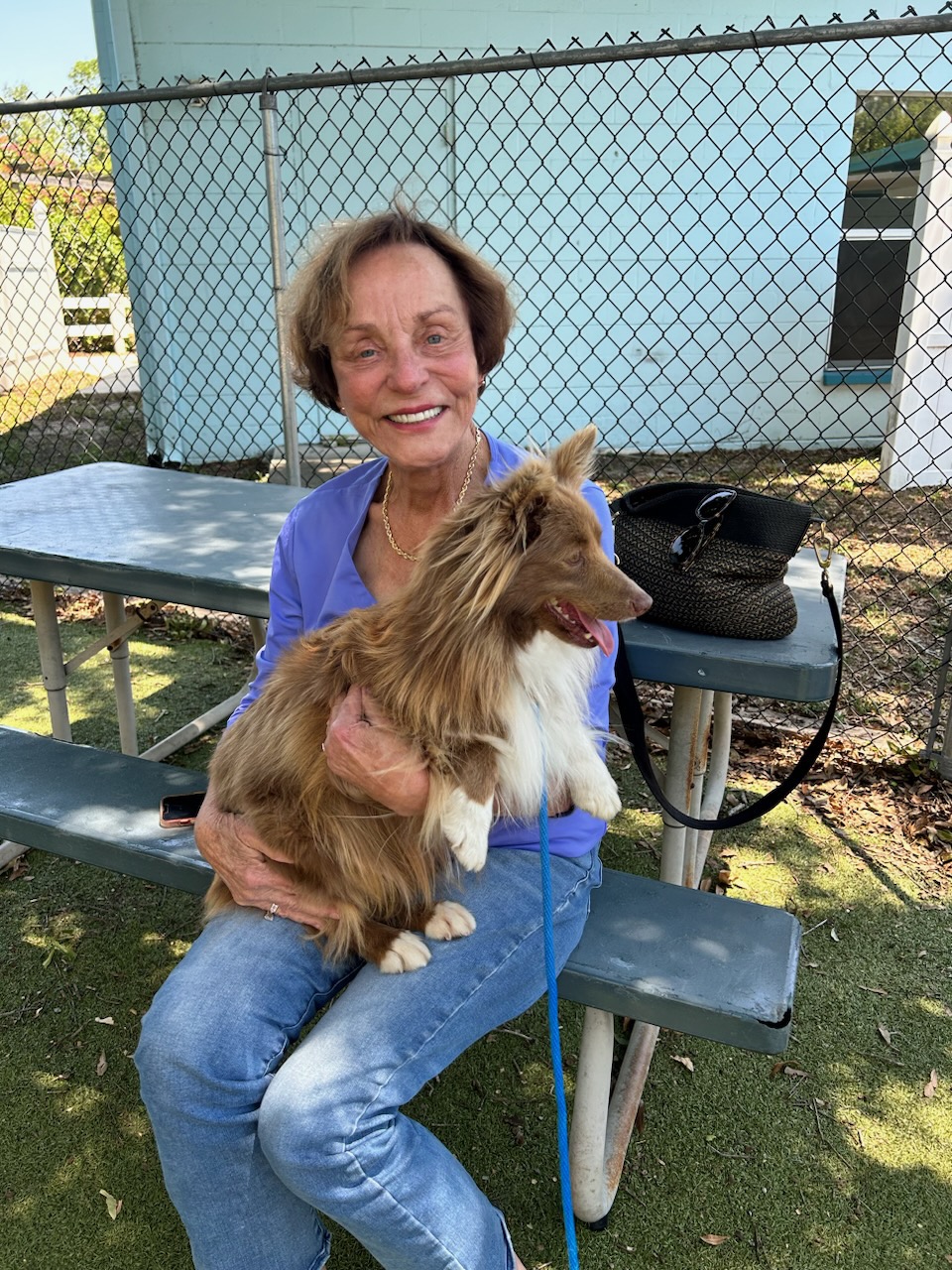 “And so we went into it with a very open mind, but not a whole lot of preconceived notions notions other than this kind of idea that, hey, wait a second, the Canine Care Certified Standards do require an adoption pathway for retiring adults and gosh, one thing we’re actually pretty good at is placing adult dogs with individuals that want to move them into their home. So that started a year -long journey.”
“And so we went into it with a very open mind, but not a whole lot of preconceived notions notions other than this kind of idea that, hey, wait a second, the Canine Care Certified Standards do require an adoption pathway for retiring adults and gosh, one thing we’re actually pretty good at is placing adult dogs with individuals that want to move them into their home. So that started a year -long journey.”
Listen in for the rest of this heart warming story about a truly staggering partnership to improve the lives of ALL dogs. Please take a moment to complete the survey Boden mentioned HERE.

